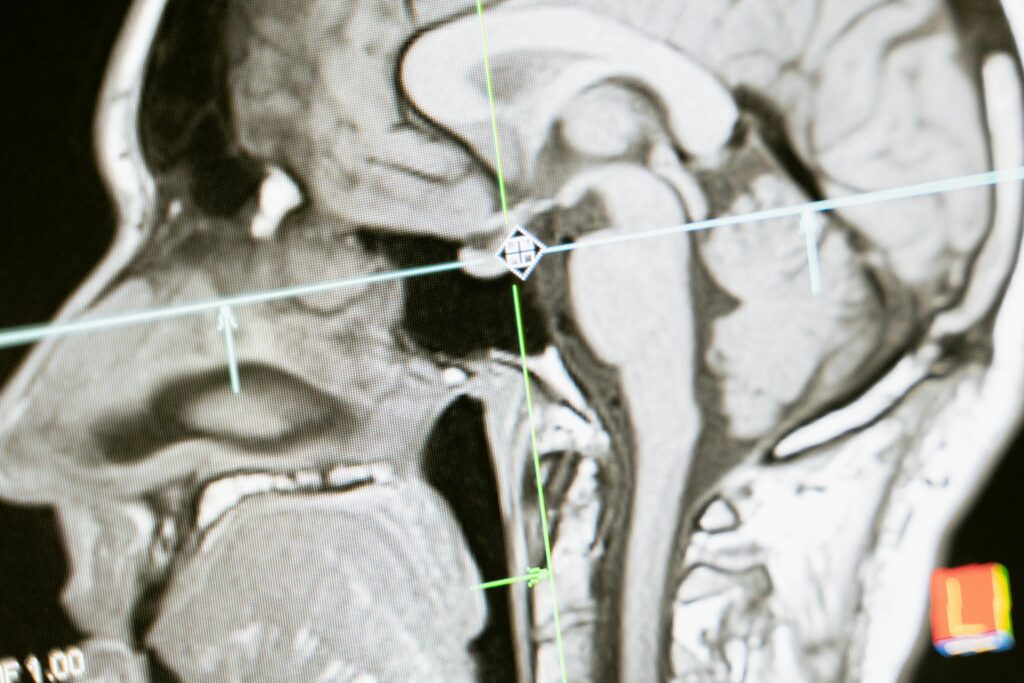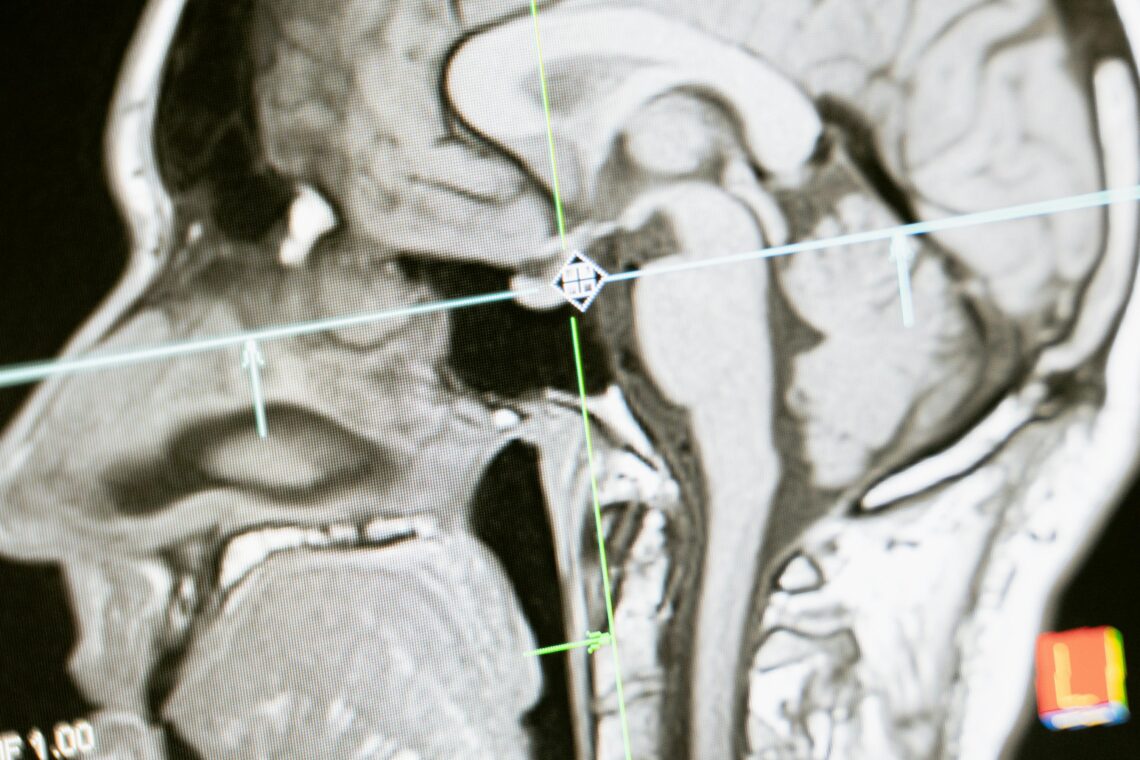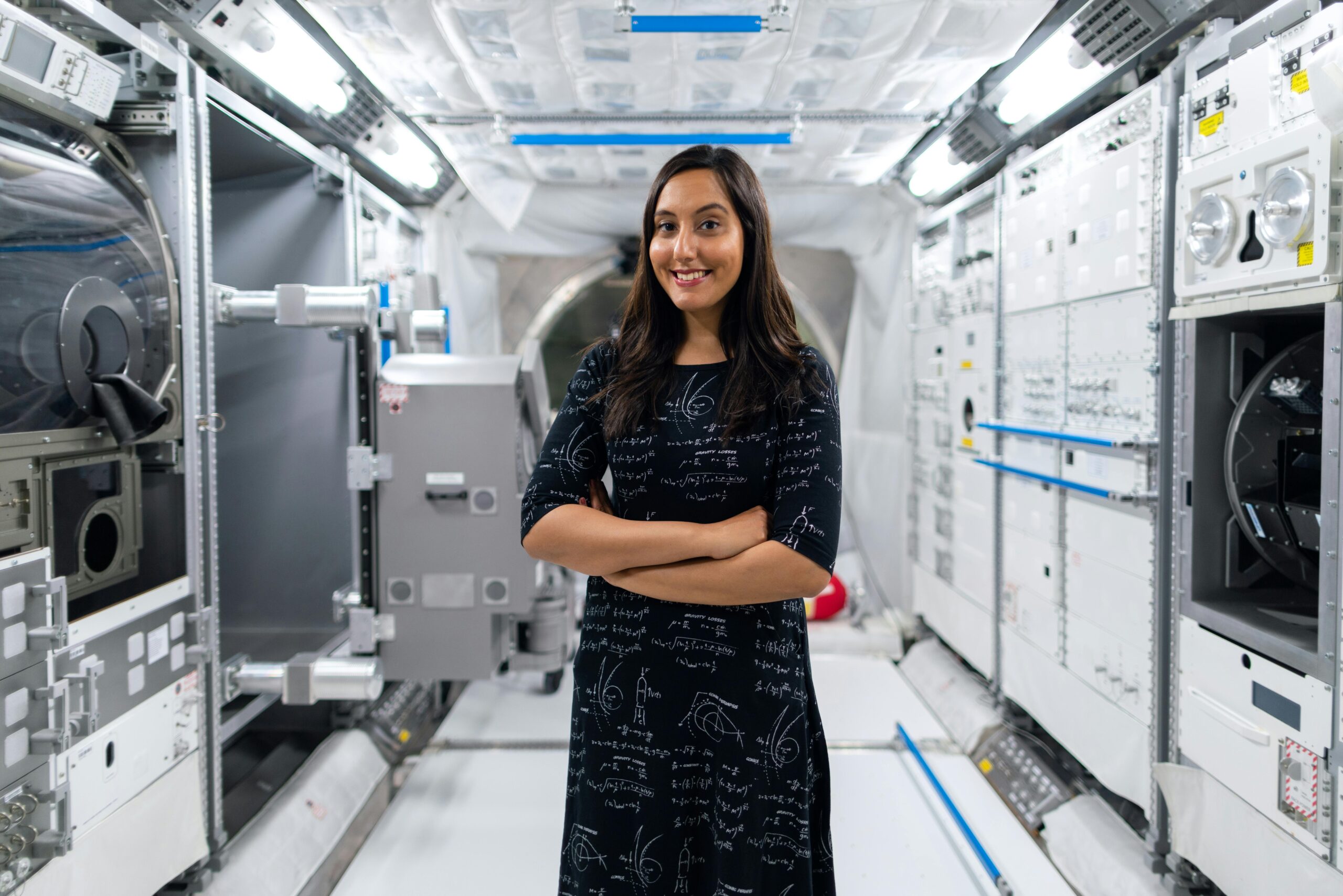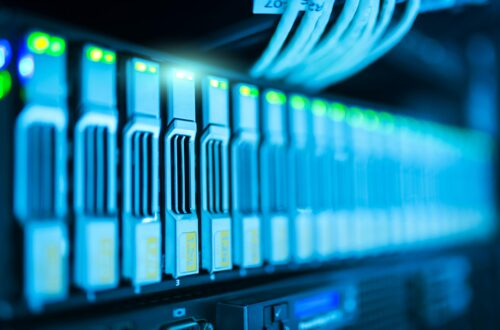Artificial intelligence (AI) has become an integral part of our modern technological landscape, revolutionizing industries and transforming the way we interact with machines. At the heart of this AI revolution lies a powerful technology: neural networks. These sophisticated systems, inspired by the human brain, have emerged as the driving force behind many of the most impressive AI capabilities we see today.
Understanding neural networks is essential to comprehending the true power and potential of modern AI. As we delve into the world of neural networks, we’ll explore how they work, the different types that exist, and the crucial role they play in enabling intelligent decision-making in AI systems. We’ll also examine real-world applications, training processes, and future developments in this exciting field.
Whether you’re a tech enthusiast, a business professional, or simply curious about the technology shaping our future, this comprehensive guide will provide you with valuable insights into the fascinating world of neural networks and their pivotal role in modern AI.
What are Neural Networks?
Neural networks, also known as artificial neural networks (ANNs), are a subset of machine learning algorithms designed to recognize patterns and solve complex problems. These sophisticated systems are inspired by and modeled after the structure and function of the human brain and nervous system.
Mimicking the Human Brain

To understand neural networks, it’s helpful to draw an analogy to the human brain:
- Neurons: Just as the brain consists of billions of interconnected neurons, artificial neural networks are composed of nodes or “artificial neurons.”
- Synapses: The connections between biological neurons, called synapses, are mirrored in ANNs as weighted connections between nodes.
- Information Processing: Like the brain processes sensory inputs to make decisions, neural networks take in data, process it through multiple layers, and produce outputs.
This biomimicry allows neural networks to tackle complex, non-linear problems that traditional algorithms struggle with, such as image and speech recognition, natural language processing, and decision-making in uncertain environments.
Key Components of Neural Networks
Neural networks consist of three main components:
- Input Layer: This is where the network receives raw data. Each input neuron represents a feature or attribute of the data being processed.
- Hidden Layers: These intermediate layers between the input and output perform most of the computation. Deep neural networks have multiple hidden layers, allowing them to learn increasingly abstract representations of the data.
- Output Layer: This final layer produces the network’s prediction or decision based on the processed information from previous layers.
Each layer contains nodes (artificial neurons) connected to nodes in adjacent layers. The strength of these connections is represented by weights, which are adjusted during the learning process.
The Power of Interconnectedness
What makes neural networks so powerful is their ability to learn and adapt. Through a process called training, neural networks adjust the weights of connections between nodes to minimize errors in their predictions. This allows them to improve their performance over time and generalize from examples to handle new, unseen data.
The interconnected nature of neural networks also enables them to capture complex, non-linear relationships in data that simpler models might miss. This makes them particularly well-suited for tasks like:
- Image and speech recognition
- Natural language processing
- Autonomous vehicle control
- Financial forecasting
- Medical diagnosis
As we continue to explore neural networks, we’ll dive deeper into how they work, the different types that exist, and the crucial role they play in modern AI applications.
How Neural Networks Work
Understanding the inner workings of neural networks is crucial to appreciating their capabilities and limitations. Let’s break down the key processes and concepts that make neural networks function.
The Feedforward Process
The fundamental operation in a neural network is the feedforward process. This is how information flows through the network from input to output:
- Input Reception: Data enters the network through the input layer. Each input node receives a value representing a feature of the data.
- Weighted Connections: The input values are multiplied by weights associated with the connections to the next layer.
- Summation: At each node in the subsequent layer, the weighted inputs from all connecting nodes are summed.
- Activation: An activation function is applied to the sum, determining whether and to what extent the signal should proceed to the next layer.
- Propagation: This process continues through all hidden layers until it reaches the output layer.
- Output Generation: The final layer produces the network’s prediction or decision.
Weighted Connections and Training
The key to a neural network’s ability to learn lies in its weighted connections:
- Initial Weights: When a network is first created, these weights are typically set to random small values.
- Training: During training, the network processes many examples, comparing its outputs to the correct answers.
- Weight Adjustment: Based on the errors in its predictions, the network adjusts its weights using an algorithm called backpropagation.
- Gradient Descent: This optimization technique helps find the weights that minimize the network’s error.
- Iterative Process: Training typically involves many iterations over the dataset, gradually improving the network’s performance.
Role of Activation Functions
Activation functions introduce non-linearity into the network, allowing it to learn complex patterns:
- Sigmoid: Outputs values between 0 and 1, useful for binary classification.
- ReLU (Rectified Linear Unit): Outputs the input if positive, else 0. It’s computationally efficient and helps mitigate the vanishing gradient problem.
- Tanh: Similar to sigmoid but outputs values between -1 and 1.
- Softmax: Often used in the output layer for multi-class classification, providing probabilities for each class.
These functions allow neural networks to model intricate relationships and make nuanced decisions based on input data.
The Importance of Non-linearity
Non-linearity is crucial in neural networks for several reasons:
- Complex Pattern Recognition: Real-world problems often involve non-linear relationships that simple linear models can’t capture.
- Feature Hierarchy: Non-linear functions allow the network to learn hierarchical features, with each layer building upon the previous one’s output.
- Universal Function Approximation: With enough neurons and non-linear activation functions, neural networks can approximate any continuous function.
- Decision Boundaries: Non-linearity enables the creation of complex decision boundaries, essential for tasks like image classification.
By combining these elements – the feedforward process, weighted connections, activation functions, and non-linearity – neural networks can learn to perform a wide variety of tasks, from simple pattern recognition to complex decision-making in uncertain environments.
As we continue our exploration, we’ll look at different types of neural networks and how they’re applied in various AI applications.
Types of Neural Networks
Neural networks come in various architectures, each designed to excel at specific types of tasks. Understanding these different types is crucial for selecting the right model for a given problem. Let’s explore three of the most common and influential types of neural networks.
Feedforward Neural Networks (FNNs) or Multi-Layer Perceptrons (MLPs)
FNNs are the simplest form of artificial neural networks and serve as the foundation for many other types.
Key Characteristics:
- Information flows in one direction, from input to output
- No loops or cycles in the network
- Typically consist of an input layer, one or more hidden layers, and an output layer
Use Cases:
- Classification tasks (e.g., spam detection, sentiment analysis)
- Regression problems (e.g., price prediction, demand forecasting)
- Pattern recognition in structured data
Advantages:
- Relatively simple to understand and implement
- Can model complex non-linear relationships
- Versatile and applicable to a wide range of problems
Limitations:
- Not suitable for sequential or time-series data
- Can struggle with very high-dimensional data
Convolutional Neural Networks (CNNs)
CNNs are specialized neural networks designed to process grid-like data, such as images.
Key Characteristics:
- Use convolutional layers to apply filters across the input data
- Include pooling layers to reduce spatial dimensions
- Often have fully connected layers at the end for final predictions
Use Cases:
- Image classification and object detection
- Facial recognition systems
- Medical image analysis
- Video processing
Advantages:
- Excellent at capturing spatial hierarchies in data
- Reduce the number of parameters compared to fully connected networks
- Can handle large input sizes efficiently
Limitations:
- Primarily designed for grid-like data, less suitable for other types
- Can be computationally intensive, especially for large images or videos
Recurrent Neural Networks (RNNs)
RNNs are designed to work with sequential data, incorporating memory of previous inputs into their processing.
Key Characteristics:
- Contain loops allowing information to persist
- Can process inputs of varying length
- Include variations like Long Short-Term Memory (LSTM) and Gated Recurrent Units (GRU)
Use Cases:
- Natural language processing tasks (e.g., translation, sentiment analysis)
- Speech recognition
- Time series prediction
- Music generation
Advantages:
- Can handle sequences of arbitrary length
- Capable of capturing long-term dependencies in data
- Versatile for various sequence-based tasks
Limitations:
- Can be challenging to train due to vanishing or exploding gradients
- May struggle with very long sequences
Each of these neural network types has its strengths and is suited to different types of problems. In practice, many AI applications combine elements from multiple types to create hybrid architectures tailored to specific tasks.
As we move forward, we’ll explore how these different types of neural networks are applied in various AI applications, driving innovations across industries.
Neural Networks and AI Applications
Neural networks have become the backbone of many modern AI applications, enabling machines to perform tasks that once seemed exclusive to human intelligence. Their ability to learn from data and generalize to new situations has led to breakthroughs in various fields. Let’s explore the importance of neural networks in AI and some key applications.
Importance in Enabling Intelligent Decision-Making
Neural networks are crucial for intelligent decision-making in AI systems for several reasons:
- Pattern Recognition: They excel at identifying complex patterns in data, often outperforming traditional algorithms.
- Adaptability: Neural networks can adjust their internal parameters to improve performance over time, allowing AI systems to adapt to changing environments.
- Handling Uncertainty: By learning from large datasets, neural networks can make informed decisions even in ambiguous situations.
- Feature Extraction: Deep neural networks automatically learn relevant features from raw data, reducing the need for manual feature engineering.
- Generalization: Well-trained neural networks can generalize from their training data to handle new, unseen inputs effectively.
Examples of AI Applications Leveraging Neural Networks
Image Recognition and Computer Vision
- Object Detection: Identifying and locating objects in images or video streams.
- Facial Recognition: Recognizing and verifying individual faces.
- Medical Imaging: Assisting in the diagnosis of diseases from X-rays, MRIs, and other medical images.
Natural Language Processing (NLP)
- Machine Translation: Translating text or speech from one language to another.
- Sentiment Analysis: Determining the emotional tone behind text data.
- Chatbots and Virtual Assistants: Enabling human-like conversations with AI.
Autonomous Systems
- Self-Driving Cars: Processing sensor data to navigate and make driving decisions.
- Robotics: Enabling robots to perceive their environment and perform complex tasks.
- Drone Navigation: Allowing drones to fly autonomously and avoid obstacles.
Speech Recognition and Generation
- Voice Assistants: Powering systems like Siri, Alexa, and Google Assistant.
- Transcription Services: Converting spoken words into written text.
- Text-to-Speech: Generating natural-sounding speech from text input.
Financial Applications
- Fraud Detection: Identifying unusual patterns in financial transactions.
- Algorithmic Trading: Making high-speed trading decisions based on market data.
- Credit Scoring: Assessing creditworthiness of loan applicants.
Recommendation Systems
- E-commerce: Suggesting products based on user behavior and preferences.
- Content Platforms: Recommending movies, music, or articles to users.
Game Playing
- Chess and Go: Achieving superhuman performance in complex strategy games.
- Video Games: Creating intelligent non-player characters (NPCs) and game AI.
Scientific Research
- Drug Discovery: Predicting potential drug candidates and their effects.
- Climate Modeling: Analyzing complex climate data to make predictions.
- Particle Physics: Analyzing data from particle accelerators to detect anomalies.
These applications demonstrate the versatility and power of neural networks in modern AI. By processing vast amounts of data and learning intricate patterns, neural networks enable AI systems to perform tasks that were once thought to require human intelligence.
As we continue to advance our understanding and implementation of neural networks, we can expect to see even more innovative applications emerge, further blurring the line between human and artificial intelligence.
Training Neural Networks for AI
The effectiveness of neural networks in AI applications heavily depends on how well they are trained. Training is the process by which a neural network learns to perform its designated task, adjusting its internal parameters to minimize errors in its predictions. Let’s explore the key aspects of training neural networks for AI.
Labeled and Unlabeled Data for Training
Neural networks can be trained using two main types of data:
Labeled Data
- Contains input-output pairs where the correct answer is provided
- Used in supervised learning tasks
- Examples: Classified images, tagged text data
- Advantages: Allows for direct evaluation of model performance
- Challenges: Can be expensive and time-consuming to obtain
Unlabeled Data
- Contains only input data without corresponding outputs
- Used in unsupervised learning tasks
- Examples: Unclassified images, raw text data
- Advantages: Often more abundant and cheaper to obtain
- Challenges: Requires more sophisticated algorithms to extract meaningful patterns
Many modern AI systems use a combination of both, known as semi-supervised learning, to leverage the benefits of each type.
Loss Functions
Loss functions quantify the difference between the network’s predictions and the actual target values. They play a crucial role in guiding the learning process. Common loss functions include:
Mean Squared Error (MSE)
- Used for regression problems
- Calculates the average squared difference between predicted and actual values
- Sensitive to outliers due to squaring of errors
Mean Absolute Error (MAE)
- Also used for regression
- Calculates the average absolute difference between predicted and actual values
- Less sensitive to outliers compared to MSE
Cross-Entropy
- Used for classification problems
- Measures the difference between predicted probability distributions and actual class labels
- Variants include binary cross-entropy for binary classification and categorical cross-entropy for multi-class problems
Binary Cross-Entropy
- Specific to binary classification tasks
- Measures the performance of a model whose output is a probability value between 0 and 1
The choice of loss function depends on the specific task and the characteristics of the data.
Process of Adjusting Weights to Reduce Prediction Errors
The core of neural network training is the process of adjusting weights to minimize the chosen loss function. This typically involves the following steps:
Forward Pass
- Input data is fed through the network
- The network makes predictions based on current weights
Loss Calculation
- The loss function computes the error between predictions and actual values
Backpropagation
- The error is propagated backwards through the network
- Gradients are calculated to determine how each weight contributed to the error
- Weight Update
- Weights are adjusted in the direction that reduces the error
- This is typically done using an optimization algorithm like Stochastic Gradient Descent (SGD)
Iteration
- Steps 1-4 are repeated many times with different batches of training data
Key concepts in this process include:
- Learning Rate: Determines the size of weight updates. Too high can lead to unstable training, too low can result in slow convergence.
- Batch Size: The number of training examples used in one iteration. Larger batches provide more stable gradients but require more memory.
- Epochs: The number of times the entire training dataset is passed through the network.
- Regularization: Techniques like L1/L2 regularization or dropout to prevent overfitting.
- Optimization Algorithms: Advanced methods like Adam or RMSprop that adapt the learning rate during training.
Training neural networks is often an iterative process, requiring careful tuning of hyperparameters and architecture choices. Techniques like cross-validation help ensure that the network generalizes well to new, unseen data.
As we look to the future, advancements in training techniques, such as transfer learning and few-shot learning, are making it possible to train effective models with less data and computational resources, opening up new possibilities for AI applications.
The Future of Neural Networks and AI
As we stand on the cusp of a new era in artificial intelligence, neural networks continue to evolve, pushing the boundaries of what’s possible in AI. Let’s explore some of the exciting trends and potential future developments in this rapidly advancing field.
Advancing Architectures
- Transformer Networks: Originally developed for natural language processing, transformers are now being applied to various domains, including computer vision and speech recognition. Their ability to handle long-range dependencies makes them particularly powerful.
- Graph Neural Networks (GNNs): These networks are designed to work with graph-structured data, opening up new possibilities in areas like social network analysis, molecular chemistry, and recommendation systems.
- Neuro-symbolic AI: This approach combines neural networks with symbolic AI, aiming to create systems that can reason logically while also learning from data.
Improved Efficiency and Accessibility
- Edge AI: Neural networks are being optimized to run on edge devices with limited computational resources, bringing AI capabilities to smartphones, IoT devices, and other low-power systems.
- Neuromorphic Computing: Hardware designed to mimic the structure and function of biological neural networks could lead to more energy-efficient AI systems.
- AutoML: Automated machine learning tools are making it easier for non-experts to design and train neural networks, democratizing access to AI technology.
Ethical and Responsible AI
- Explainable AI: As neural networks become more complex, there’s a growing focus on making their decision-making processes more transparent and interpretable.
- Bias Mitigation: Researchers are developing techniques to identify and mitigate biases in neural networks, ensuring fairer AI systems.
- Privacy-Preserving Machine Learning: Techniques like federated learning and differential privacy are being developed to train models while protecting individual privacy.
New Frontiers
- Quantum Neural Networks: Quantum computing could potentially revolutionize neural networks, allowing for exponentially more complex calculations.
- Brain-Computer Interfaces: Neural networks could play a crucial role in decoding brain signals, potentially leading to advanced prosthetics and new ways of human-computer interaction.
- Artificial General Intelligence (AGI): While still a distant goal, some researchers believe that advanced neural network architectures could be a stepping stone towards AGI.
Challenges and Considerations
As we look to the future, it’s important to consider the challenges that come with these advancements:
- Ethical Implications: As AI systems become more powerful, ensuring they are used ethically and responsibly becomes increasingly crucial.
- Energy Consumption: Training large neural networks requires significant computational resources. Developing more energy-efficient methods is a priority.
- Data Quality and Availability: As models become more sophisticated, the need for high-quality, diverse datasets grows.
- Regulatory Frameworks: As AI becomes more prevalent in critical applications, developing appropriate regulatory frameworks will be essential.
The future of neural networks and AI is bright, with potential applications that could transform nearly every aspect of our lives. From healthcare to environmental protection, from scientific discovery to artistic creation, neural networks will continue to be at the forefront of AI innovation.
As we navigate this exciting future, it’s crucial to approach these advancements with a balance of enthusiasm and caution, ensuring that we harness the power of neural networks and AI to benefit humanity as a whole.




